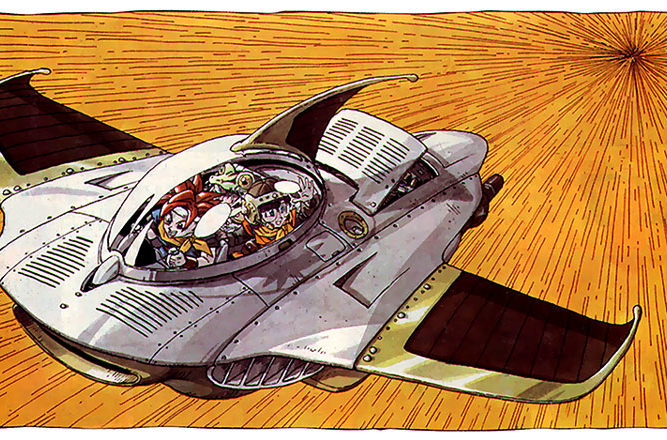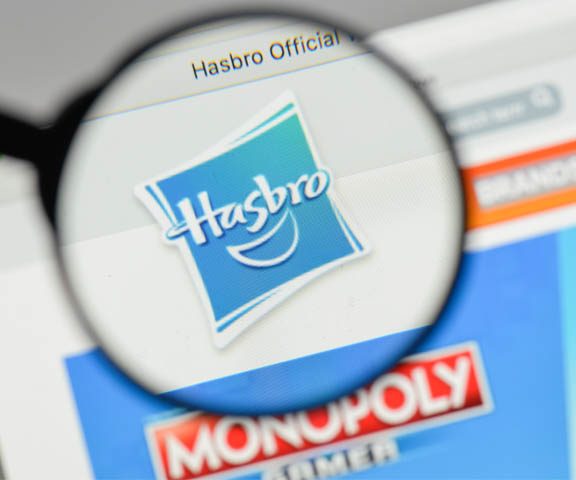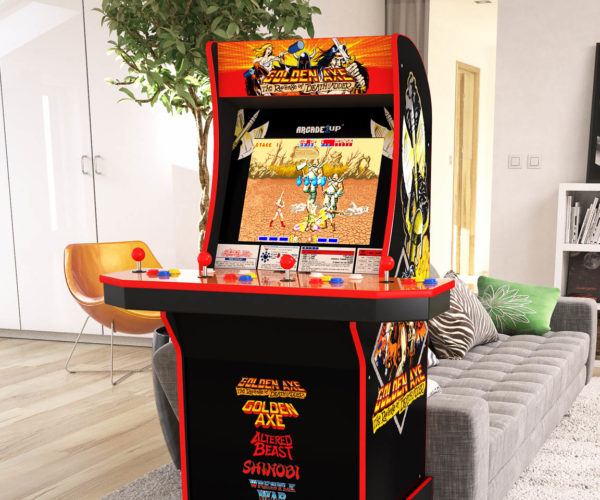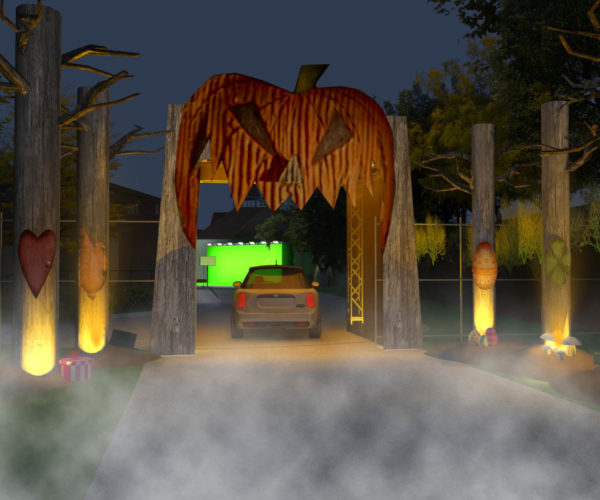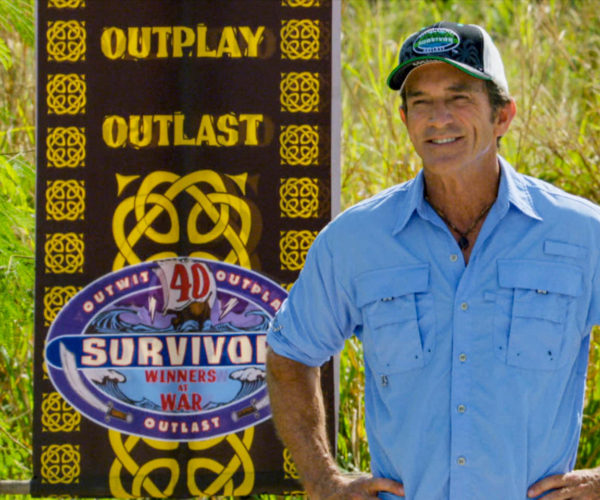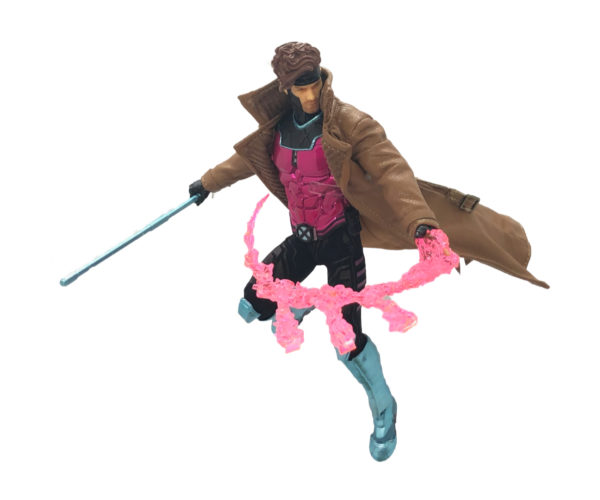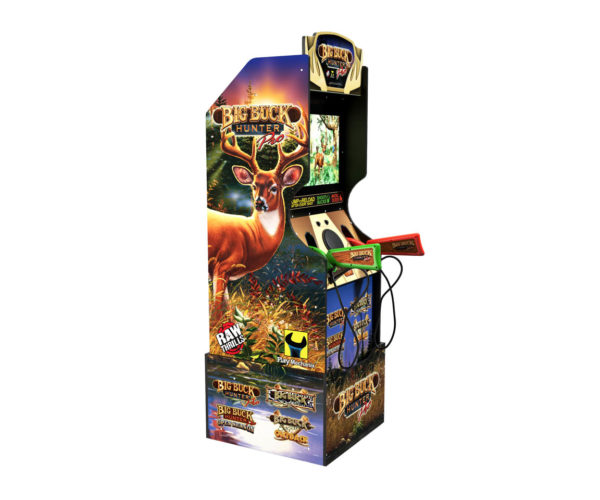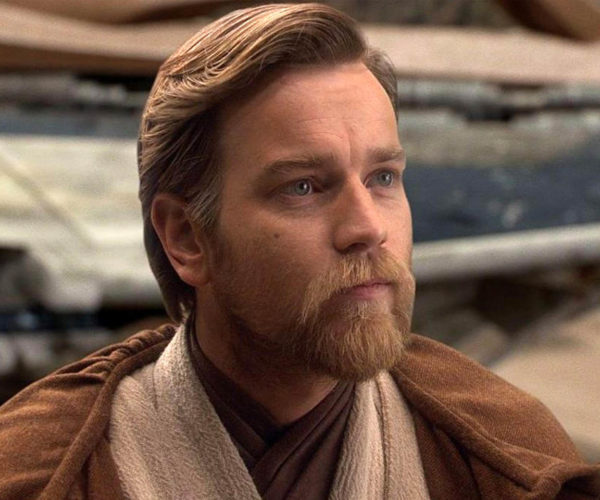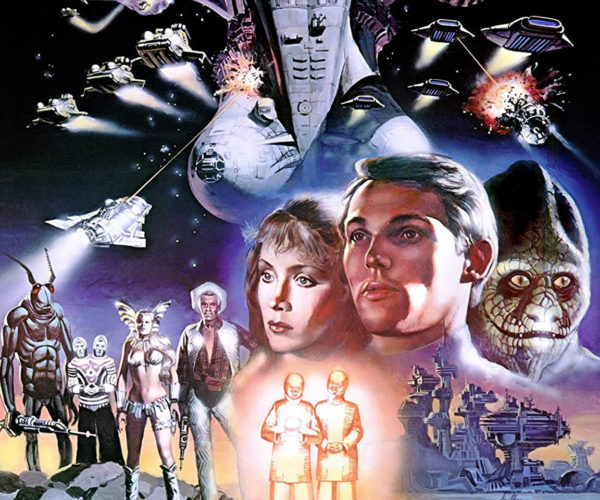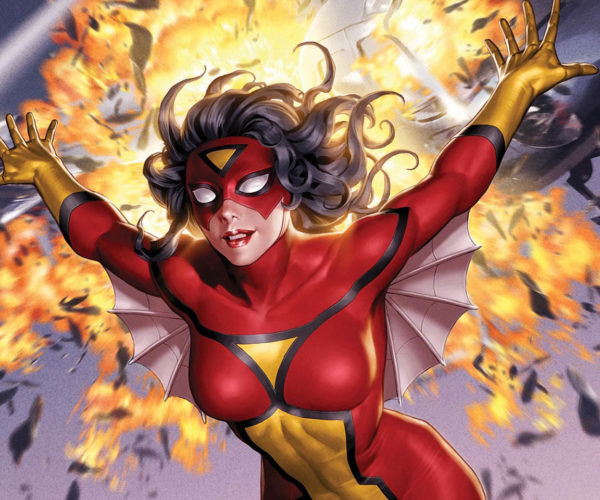We gamers can’t live without the idea of categorizing our favorite pastime. Shooters, RPGs, hardcore, casual, mobile, console, PC. No matter what kind of games you play, Steam will let you slap on a handful of tags that will allow you to label your favorites and coax you into buying similar games.
Online retailers know of our love to categorize so much that they have uncovered genius ways to monetize it!
This idea goes with time, as well. Retro, modern, classic, new, we all know the drill. The tried and true method of “generations”, that is to cram games into a category based on the age of the console a game was first released on, has yet to find a competitor for the most sensible option. The looming threat of the PlayStation 5 hangs over our heads with an absurd ninth generation of video game consoles.
I too subscribe to this method in ways that most do, but I also look at gaming in terms of epochs, a far less common way to view the history of gaming. On my count, we are currently in the fourth epoch of video gaming history, and if you’ll permit me, I’ll be glad to lay out how we got to this point today.
The Primordial Epoch
Pong, Arcades, Atari
At first, there was nothing… then, there was Pong.
Unbeknownst to creator Alan Alcorn and the creators at Atari, Pong single-handedly launched a new industry that would become the multi-billion dollar entertainment branch that it is today. Its success made way for a series of early arcade hits that would soon flood bowling alleys, roller-skating rinks, and whatever else bell-bottomed brats of the 70s and early 80s did for fun before the Internet could suck their souls out.
Pong’s success was quickly capitalized on in Japan, giving the country an early foothold in game development with classics like Space Invaders, Galaga, PAC-MAN, Donkey Kong, and Frogger. Namco, Konami, SEGA, Nintendo, all your favorites found a start here, even if they weren’t producing games of the same quality they eventually would,.
Back in the States, one Nolan Bushnell brought video games into the home with the Atari 2600 in 1979, downsizing all of those beautiful arcade hits to run bare-boned on his inferior hardware. Can you imagine the outcry such a move would receive today?! Atari’s success on the home market would prove so successful that it would crank out games with an assembly line mindset by 1982, and the video game market would crash…
DOWNFALL
Making the first epoch of gaming come to a definitive close. This wraps up in 1983 with a crash of the video game stock market, in which unsold games flooded warehouses to the point where they had to be buried in the New Mexico desert. Seriously, this was an urban legend for so many years until film crews actually went out into the desert and dug all the games up in 2014!
While no game in particular can be blamed for this downfall, most like to point at E.T. The Extra Terrestrial for bringing down the industry.
The Japan Epoch
Nintendo and the dominance of the JRPG
Until an upstart toy company from Japan called Nintendo came to save the day. Already a success in its home country in 1983, the Nintendo Entertainment System came to American shores in 1985, bringing along with it a game called Super Mario Bros. Again, most of this is common knowledge with a clean-cut beginning to this epoch.
Nintendo expanded its dominance throughout the remainder of the 1980s, established The Legend of Zelda and Metroid as its core franchises, and pushed Nintendomania into overdrive with a pair of excellent Mario sequels.
Super Mario Bros. 2 holds up the best of these three. Prove me wrong!
Nintendo couldn’t take over the United States market on its own though. It had the backing of powerhouse third-party developers like Capcom and its cherished Mega Man series and Konami and its Castlevania series to do a lot of the heavy lifting.
A small publisher in Japan called Enix also found a little niche with a series called Dragon Quest that exploded in Japan overnight. While its success mostly remained on the continent, it did inspire another small developer called Square to jump on its bandwagon with a series called Final Fantasy.
The 80s turned into the 90s, and Nintendo, Capcom, and Konami ran the show for the most part throughout the Super Nintendo’s lifecycle with their superior production values and name recognition. SEGA challenged Nintendo and kept up pace with Sonic the Hedgehog, performing admirably in the face of such a lost cause.
By 1995, Sony split with Nintendo over manufacturing differences and the rise of CDs, Western markets, which were still niche at the time and mostly stuck on home computers, looked like they were finally about to catch on with games like Crash Bandicoot and Tomb Raider. Japan quickly counter-punched with a triple blow of Final Fantasy VII, Metal Gear Solid, and Legend of Zelda: Ocarina of Time. (Mega Man Legends always gets overlooked for its contributions, but gamers at the time weren’t as quick to forgive Capcom for trying to get ahead of the curve as they were Nintendo, Square, and Konami)
None benefitted from this mid-90s boom of CD technology more than Square, who rode Final Fantasy VII’s success to become the premiere video game developer of the late 90s all the way up until the end of the epoch. The rise of the JRPG pushed the boundaries of storytelling in video games placed the genre in the driver’s seat for many years.
Oh, and there is that whole Pokémon fad… that’s still going on today.
Final Fantasy X, Devil May Cry, Metal Gear Solid 2: Sons of Liberty, and The Legend of Zelda: The Wind Waker feel like the perfect games to close this epoch on. All four games emerged from the top four Japanese developers, and all are masterpieces that capitalize on their strengths.
DOWNFALL
Unlike the previous downfall, there really is no definitive event that signals the end of Japan’ hold on the video game market. It might have extended deeper into the decade, but these are the trends that I most equate to the end of this age (and also my “classic” era of gaming)
Failure of the Dreamcast
SEGA’s much beloved console fought the good fight against Sony, but it ultimately could not keep pace. Loaded with the optimism and brilliance of late 90s enthusiasm with games like Shenmue and Jet Set Radio, some would say gaming lost a bit of that soul when SEGA pulled out of the race.
The emergence of the Xbox
Those niche games on your PC found a home on your television when Microsoft jumped into the home console market, bringing Western games to you easier than ever before. PC developers already caught up to Japan with quality titles at the time like Half-Life, Fallout, StarCraft, and Baldur’s Gate, but the barrier of entry to play them was far higher, turning off gamers who didn’t want to bother with performance specs, graphic cards, installation glitches, or patches.
All that vanished in with the Xbox, allowing PC-esque games like Halo, Star Wars: Knights of the Old Republic, and The Elder Scrolls III: Morrowind to be enjoyed with a simple plug-and-play functionality
Square and Enix merger
Square reigned supreme as the top developer of the 90s, ranging from Final Fantasy IV on the SNES all the way to Final Fantasy X, Kingdom Hearts, and Final Fantasy X-2 on the PlayStation 2. Its boundary-pushing JRPGs revolutionized storytelling, production values, and experimenting with RPG-hybrid genres with classics like Parasite Eve.
Little did we know that the company was actually bleeding money in Japan after Final Fantasy: Spirits Within tanked at the box office and was performing far worse that its rival, Enix, which was still relatively unknown in the States.
The two companies merged in 2003, and again, something was lost in the newly formed halls of Square Enix. The once-dominating JRPG genre started to feel stale, and that great experimental mindset vaporized with a decade of “safe” releases. I blame the lack of competition in the JRPG market, something Square Enix wouldn’t be able to rediscover until Atlus started beating it at its own game with the Persona series later in the decade.
These two titans of Japanese game design no longer pushing one another to succeed marked a definite end to an era.
Game Boy Advance making classics portable novelties
And while the Game Boy Advance held on to those old Japanese sentimentalities, one could also say that it held them a little too closely. Nintendo and Square especially discovered that it could repackage its old cutting-edge classics on a relatively cheap platform and sell them to you for half the price of a console game.
Making the classics accessible was a thankful move, but it also made those powerhouses feel like something of a novelty, with the ever looming implication that it was time to move on to bigger, better things.
The Blockbuster Epoch
Reign of the “AAA” Market
Unlike the fall of the Japan Epoch, there is a definitive year for the Blockbuster Epoch’s start: the year 2004. If you don’t agree, take a look at the year’s biggest “AAA” releases:
- Grand Theft Auto: San Andreas
- Halo 2
- Jak 3
- Ninja Gaiden Black
- Ratchet and Clank: Up Your Arsenal
- World of Warcraft
- Metroid Prime 2: Echoes
- Doom 3
- Burnout 3 Takedown
- Metal Gear Solid 3: Snake Eater
- Half-Life 2
- Prince of Persia: Warrior Within
- Star Wars: Knights of the Republic 2
See all those numbers in the titles? Yup… sequels. For better or worse, this is it. This is the beginning of the annual “AAA” release cycle. I still feel sick typing those letters out together, knowing what a jumbled mess and dysfunctional marketing ploy the idea of “AAA” would eventually become, but in 2004, it was all the rage. Video games were now an adult’s pastime, and the biggest companies drooling to take on Hollywood as the dominant entertainment outlet in North America.
To 2004’s defense, most of those games are awesome, but relief in the form of Shin Megami Tensei: Nocturne and Katamari Damacy helped us weirdlings who liked to keep it nerdy.
Early pioneers of this era were not too hard to put a finger on, and I like to refer to them as the three B’s.
Bioware struck big with Star Wars: Knights of the Old Republic, establishing the fan-favorite RPG studio as the unquestioned best developer of the decade. PC gamers had been singing praises all along, but console gamers finally got a taste in 2003 in a galaxy far, far away. BioWare’s hit established its brand of storytelling, morality system, and brilliantly balanced mix of linear/open-world design, and all three would inspire countless imitators and pave the way for BioWare’s own hits Jade Empire and Mass Effect.
Bethesda found its footing too, jumping from the Xbox success of Morrowind and carrying it into The Elder Scrolls IV: Oblivion, another huge open-world classic we’re still trying to escape the shadow of.
Blizzard, once a strategy game developer, created a world of its own inside World of Warcraft. Before WoW, online gaming was a novelty with a certain innocence to it, seen in games like Everquest, Phantasy Star Online, and Final Fantasy XI. In World of Warcraft, Blizzard found out how to make such interactions the standard, so much so that every game demanded earning DKP a full time job on its own.
One further success story still came from Japan in the form of Resident Evil 4, a game that Western developers pounced all over to improve upon its new approach to third-person shooting. Iron sights, over the shoulder aiming, the mechanics of every major third-person shooter since all came from Resident Evil 4, were poached and improved upon by Dead Space, and have been cemented as the standard ever since.
Thanks Capcom! Now go back to creating Mega Man compilations! (Srsly, where’s my Breath of Fire 3 & 4 complication on the Switch?)
The DNA of these four games can be felt in most major video games to this very day. The Xbox 360 came along soon after in 2006, trounced Sony, outlived the “flash in the pan” Wii, gave us BioShock and Call of Duty 4, and that was it. Japan has struggled ever since to keep up in the console market. Hope emerged with Persona and Dark Souls, but yeah…
The Western world would dominate video games with ultra huge budgets for many, many years.
DOWNFALL
Again, there is no definitive “end” to this epoch. Some might say we’re still in it, but I would argue the “AAA” model is hardly the driving force in the video game industry anymore. Somewhere around 2014 and 2015, something changed…
The decline of BioWare and Bethesda
Few would argue that they see the same spirit in BioWare nowadays that they once saw. After being bought out by EA in 2007, the world sighed in relief as Mass Effect 2 and Dragon Age: Origins came out with the same gusto that everyone identified the company with. Since then… not as much.
Bethesda, too, has stumbled across troubled times. Fallout 3 and Skyrim further capitalized on Oblivion’s success, but many gamers felt something missing from the highly anticipated Fallout 4, claiming that the company didn’t know how to evolve its games besides simply making them bigger. Fallout 76 would further advance that idea.
It also didn’t help that a small Polish company called CD Projekt would come along and trounce a decade of RPG dominance with The Witcher 3: Wild Hunt, a game that so thoroughly crushed its peers that it made their offerings seem like LJN games. (Look up that reference, you GenZ babies!)
The decade’s two premiere developers fell on harsh times, losing something of their souls by trying to strike it big in the corporate world. The mechanics they also built their names upon finally started to feel stale, a trend that spread throughout much the “AAA” scene.
Time will only tell if they recover, or go the way of some of their peers like poor Visceral Games.
Konami and Kojima fallout departure
When such a pairing accomplishes so much, the only enemies they will gain is their allies. The breakup of Hideo Kojima and Konami sent dark, spiteful reverberations throughout the video game industry. Developers vs Corporations. Art vs Budgets. Gamers vs Stockholders. It was a traumatic event that soured everyone involved. Kojima split, leaping into the welcoming arms of Sony…
And Konami, wisely in hindsight, saw that the future of video games was NOT the “AAA” experience. Was it wrong? Probably not, judging by the way gaming is moving these days. The problem is that it took its beloved franchises with it, dooming them to pachinko parlors and mobile app purgatory.
So that means the Suikoden compilation on my Switch is not likely going to happen.
Still, while gamers revolted again Konami had sided with Kojima during the whole affair, I can’t look back and blame Konami as I once did. Maybe they went about it the wrong way, but the company’s move was a clear indication that gaming was onto something new, something that we still can’t define to this very day
The ??? Epoch
Everything from VR to Lolicon Gacha Apps
I call it this because we still have zero flippin’ clue on what video gaming is at the moment. I mean, it’s just such a different beast than the nerdy hobby it was in the 90s. I simply can’t keep up with it anymore, so I guess that’s why I’m finding more fun going back to those old Japan Epoch favorites.
Like mobile gaming? How many countless games do I have to list? Hearthstone, Fire Emblem Heroes, Pokemon GO!, Clash of Clans, Puzzles and Dragons. They are all out there and ready to suck away your hard earned money for gaming as a service. Don’t worry, I won’t forget to mention Terra Battle, the game I’ve sunk more hours into than any other game in my life at this point. (yes, I recovered my deleted account and still log in every day, if only to get my rewards)
World of Warcraft hasn’t been flavor of the month for quite some time. Fortnite, Minecraft, and PlayerUnkown’s Battleground dominate the online space as a strange mix of video game, social media outlet, online hangout, or whatever you want it to be. MMORPGs are way too old, nobody has time for minus 50 DKP and angry clan leaders anymore.
Sorry, Final Fantasy XIV. You might be the absolute best Final Fantasy experience since the Super Nintendo, but nobody has the time for it anymore. The kids have spoken!
Indie gaming has been around since 2004 with Cave Story and 2008 when Xbox Live Arcade started cranking out quality titles, but in recent years, major hits appear in headlines more so than the big stuff. Stardew Valley, Undertale, Shovel Knight, Rocket League, Celeste, Papers Please, and Untitled Goose Game are the poster children of indie games making it bigger than huge blockbusters.
Not only do they have huge, rabid online fanbases, they also clean up at the gaming awards.
And yes, Japanese and big budget stuff are still around. Somehow, Capcom beat the odds to make Resident Evil relevant again after a decade and a half of being a laughing stock.. How on Earth did THAT happen? Call of Duty and Madden show up every year. Star Wars had a quality 2019 release… that I totally missed and hadn’t even heard of. Control? The Outer Worlds? Have I become so far detached from the “AAA” market that I haven’t even heard of its major releases?
What about VR? That’s an entirely different market on its own, one that is somehow supposed to be lumped together into this grand theory of “gaming” with lolicon gacha apps.
And yes, the PlayStation 5 is coming, but who knows what it’s going to bring with it. I mean, computers are far more accessible today than they were even half a decade ago, and it’s not like Square Enix is going to let Sony have Final Fantasy VII Remake forever. How many of us are scratching their heads, wondering what the point even is? Having a console for the sake of having a console?
I have a feeling we’re going to be stuck in this epoch for a while. Not because of the kind of games that come out, but rather because, we have no idea what gaming is at the moment.
